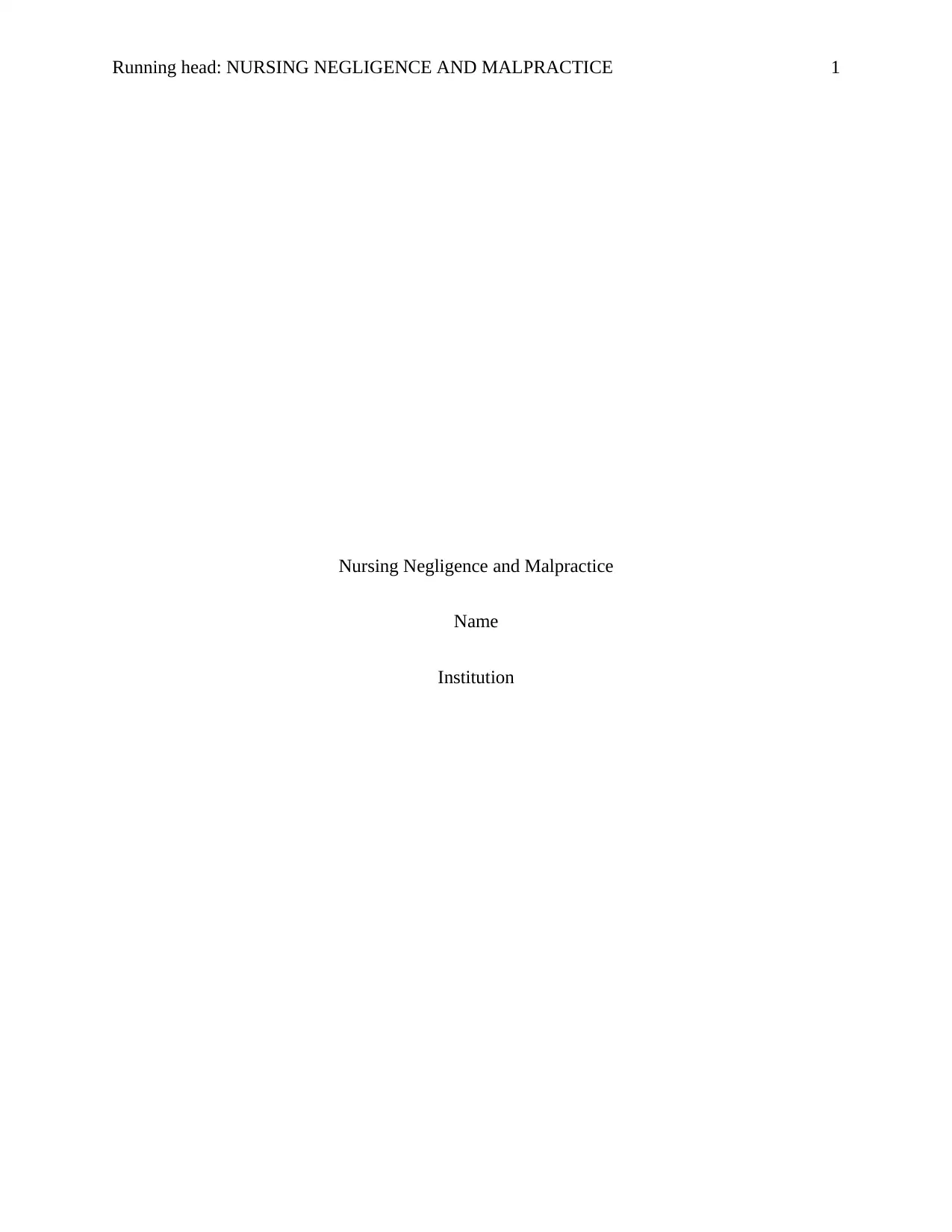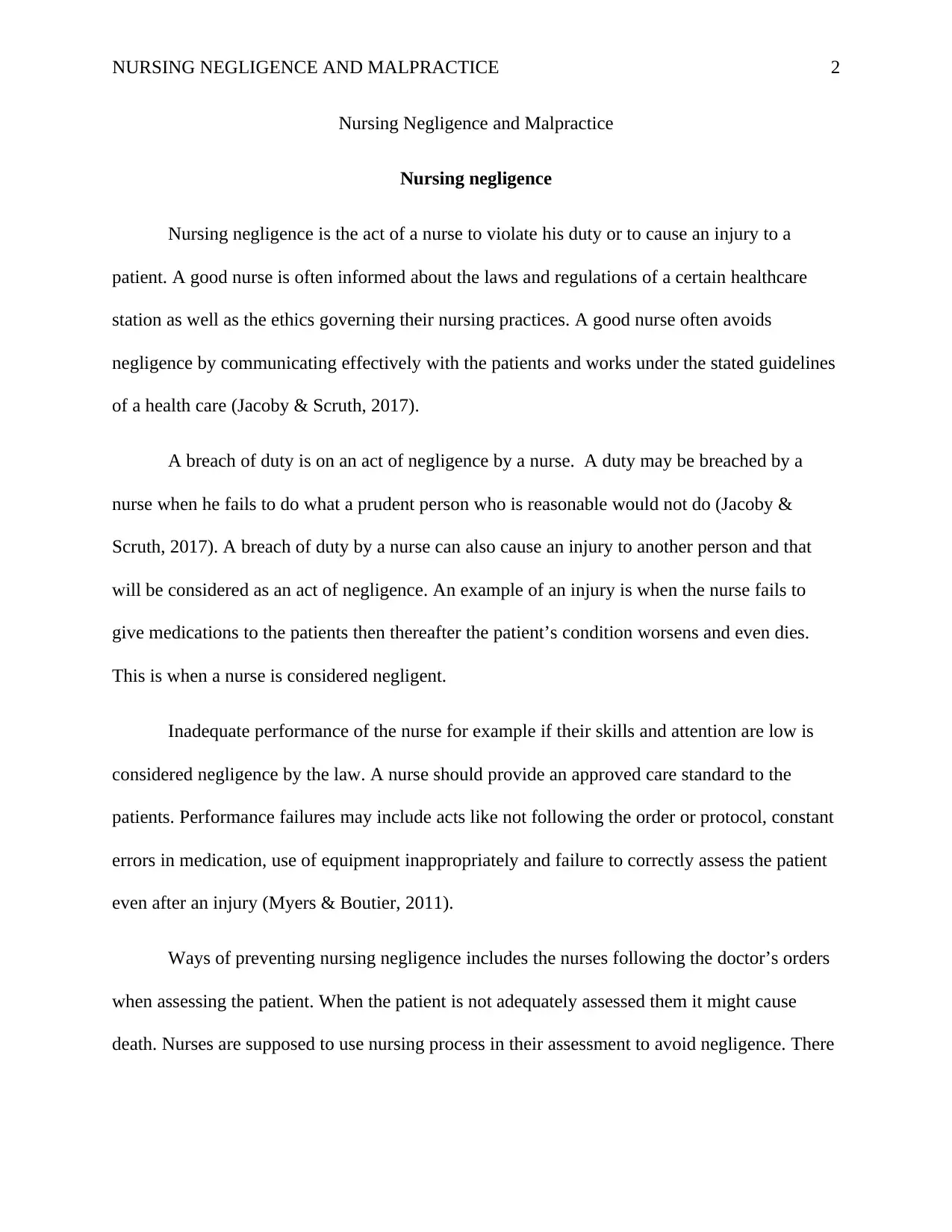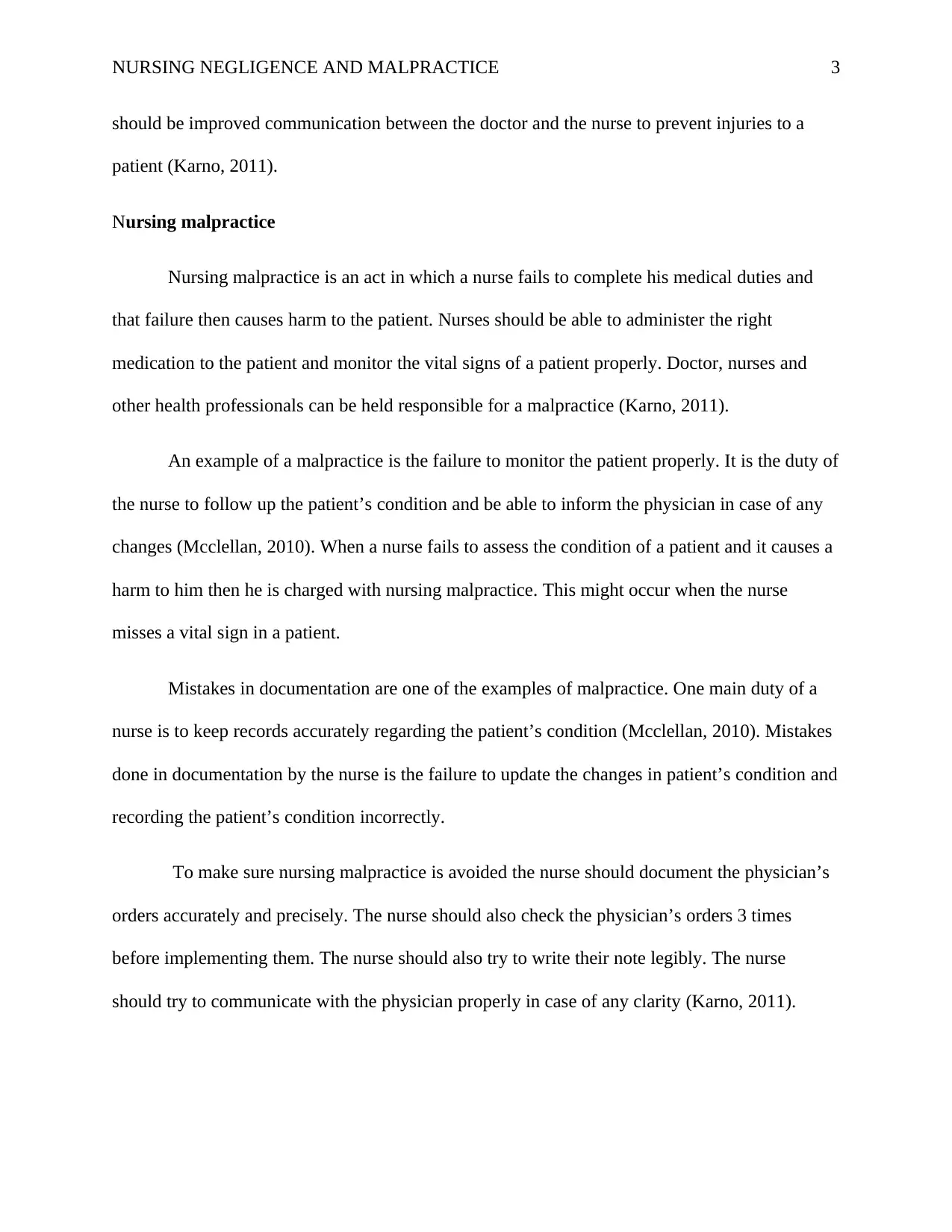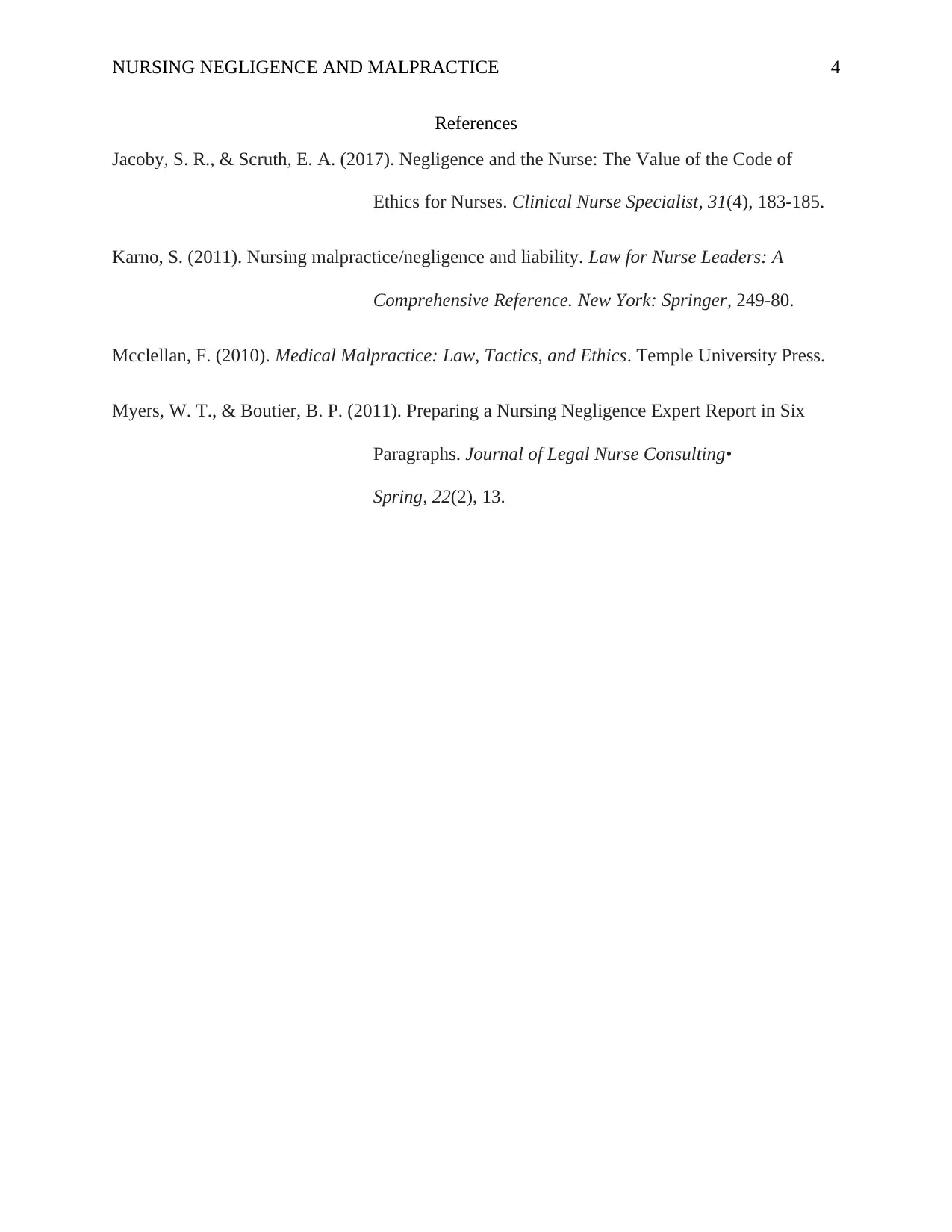Understanding & Preventing Nursing Negligence and Malpractice Cases
VerifiedAdded on 2023/06/12
|4
|778
|143
Essay
AI Summary
This essay provides a comprehensive overview of nursing negligence and malpractice, highlighting the key differences between the two concepts. It defines nursing negligence as a breach of duty by a nurse that results in harm to a patient, providing examples such as failing to administer medication or inadequate patient assessment. The essay also discusses nursing malpractice, which involves a nurse's failure to fulfill their medical duties, leading to patient harm, such as improper monitoring or documentation errors. Furthermore, it explores preventive measures for both negligence and malpractice, emphasizing the importance of following doctor's orders, using the nursing process for assessment, improving communication, and accurate documentation. The essay references relevant academic sources to support its explanations and arguments.
1 out of 4











![[object Object]](/_next/static/media/star-bottom.7253800d.svg)